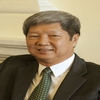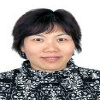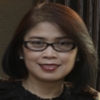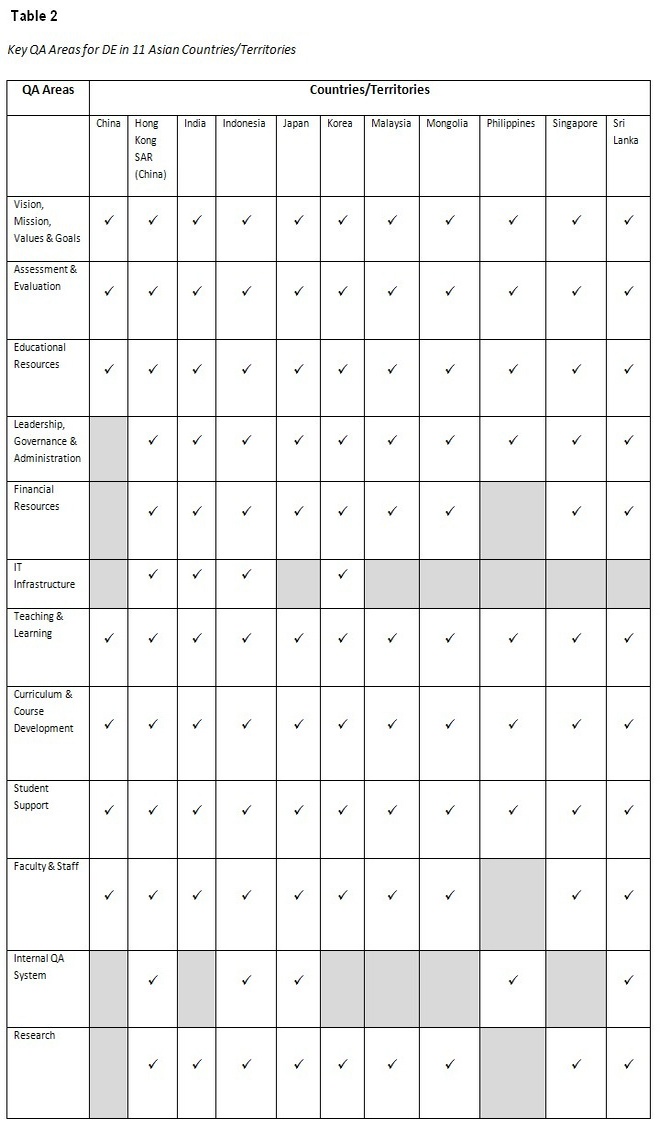




 |
 |
 |
 |
 |
Insung Jung
International Christian University, Japan
Tat Meng Wong
Wawasan Open University, Malaysia
Chen Li
Beijing Normal University, China
Sanjaa Baigaltugs
Mongolia University of Science and Technology
Tian Belawati
Universitas Terbuka, Indonesia
With the phenomenal expansion of distance education in Asia during the past three decades, there has been growing public demand for quality and accountability in distance education. This study investigates the national quality assurance systems for distance education at the higher education level in Asia with the aim of contributing to a better understanding of the current level of development of quality assurance in Asian distance education and to offer potential directions for policy makers when developing and elaborating quality assurance systems for distance education. The analysis of the existing quality assurance frameworks in the 11 countries/territories selected reveals that the level of quality assurance policy integration in the overall national quality assurance in higher education policy framework varies considerably. The purpose of quality assurance, policy frameworks, methods, and instruments in place are generally tailored to each country’s particular circumstances. There are, however, obvious commonalities that underpin these different quality assurance efforts.
Keywords: Accreditation; distance education; e-learning; higher education; quality assurance
Daniel (2003) suggests that there is ample evidence of distance education (DE) in Asia making great strides with regard to access, equity, and cost-benefit. What is uncertain, however, is whether DE in Asia is providing quality education.
Over the last few decades, there has been a substantial growth in DE in Asia. There are now at least 10 mega-universities, over 70 open universities, and a growing number of conventional institutions offering DE, as well as a rapidly growing number of private and/or for-profit DE providers operating in Asia (Latchem & Jung, 2009). With the phenomenal expansion of DE and an increasing dependency on DE to provide education, especially higher and further education, there has been growing public concern over the quality of DE delivered.
The meaning of quality in DE, in particular, has attracted debate. As suggested by Perraton (2000), the goal of DE for some countries (or providers) is to achieve a level of quality on par with that of face-to-face education. However, Stella and Gnanam (2004) have suggested that DE is so distinctive that the aims and methods of face-to-face education cannot be applied in assessing its quality. Furthermore, as Koul (2006) has commented, DE should be judged by the standards of face-to-face education while factoring in some distinctive features of DE, such as open entry, flexible operations, and technology-based course delivery.
In addition, quality in DE has presented different meanings for governmental policy makers, institutional administrators, teaching staff, and students. Governments may be more interested in efficiency, cost-effectiveness, and public accountability (Koul, 2006), whereas DE providers may be more interested in the quality of their management, staffing, courses, and graduation rates (Hope, 1999). Teachers may be more concerned with the quality of the learning processes and outcomes (Jung, 2011), while students may be more preoccupied with the costs, flexibility, and interactions in their learning (Cashion & Palmieri, 2002; Ehlers, 2004). Moreover, societal and cultural environments affect quality assurance (QA) policies and practices, as indicated in Jung’s (2010) ecological model of QA in DE. QA depends upon reconciling all of these different perspectives, considering societal and cultural variations, and reaching agreement on the quality criteria and standards by which to judge the quality of input, process, and output of DE.
Various national, regional, and international initiatives have been undertaken with regard to QA in DE, including e-learning. Examples of national initiatives include the UK Quality Assurance Agency’s Guidelines on the Quality Assurance of Distance Learning (see http://www.qaa.ac.uk/academicinfrastructure/codeofpractice/distancelearning/contents.asp), the Norwegian Association for Distance Education’s Quality Standards for Distance Education (see http://nettskolen.nki.no/forskning/DISTUMQualityAssurance.pdf), the Australasian Council on Open, Distance and E-Learning’s benchmarks for DE and e-learning (see http://acode.edu.au/resources/ACODE_benchmarks.pdf), and the National Association of Distance and Open Education Organizations of South Africa’s quality criteria for designing and delivering distance education. To mention a few examples of regional and international initiatives, the African Union Commission developed the African Higher Education (including DE) Quality Rating Mechanism (see http://www.africa-union.org/root/UA/Conferences/2007/aout/HRST/06-10%20aout/African%20HE%20Quality%20Rating%20Mechanism-%20E.doc), the European Association of Distance Teaching Universities produced the Quality Manual for E-learning in Higher Education (see http://www.eadtu.nl/e-xcellenceQS/files/members/E-xcellenceManualGrey/index.htm), the Asian Association of Open Universities offered the AAOU Quality Assurance Statements of Best Practice, and the International Council for Open and Distance Education launched a pilot project (see http://www.icde.org/?module=Articles;action=Article.publicShow;ID=1765) to identify regulatory frameworks for distance and online education in different regions, to investigate the best practices, and to examine the rules and regulations hindering distance and online education development.
In Asia, several countries have recognized the need for well-defined QA policy frameworks for DE to assure that quality education is delivered to both students and the public, to safeguard against unscrupulous practices, and to initiate development of QA systems, specifically for DE. This study investigates national QA systems for DE at the higher education level in Asia. Its primary objective is to develop a better understanding of the current development of QA in Asian DE and to offer policy makers directions for developing and elaborating QA systems for DE in their own jurisdictions. DE in this study refers to various forms of technology/media-supported education, such as e-learning.
The study was carried out between January and December 2010 and employed three data collection steps: (a) 11 cases (10 countries and one territory) from East, South, and Southeast Asia were carefully chosen to include those with relatively well-established QA systems, those just introducing QA systems, and others still in the process of developing QA concepts in DE; (b) formal documents published by QA agencies (research institutes and governments in the selected countries/territories) and other references were analyzed to delineate DE development, QA policies, procedures, standards, and criteria for higher education in general and DE specifically; and (c) face-to-face, email, or telephone interviews with local experts working in the QA agencies and DE institutions were conducted to verify the data obtained. No quantitative data related to QA policy development and implementation (e.g., the number of accredited/assessed DE institutions, the number of QA criteria, and standards) were collected because they were not considered necessary for the purposes of this study. This paper outlines the development of DE in each of the 11 cases, discusses differences and similarities, and concludes with a set of recommendations for the further development of QA for Asian DE.
The following section outlines the development of DE and national QA systems in China, Hong Kong SAR (China) (Hong Kong hereafter), India, Indonesia, Japan, South Korea (Korea hereafter), Malaysia, Mongolia, Philippines, Singapore, and Sri Lanka to provide a basis for subsequent analyses.
The Open University System of China (OUSC) (combining former China Central Radio and TV University, which was established in 1979, with other radio and TV universities across the country) was the country’s sole DE provider for 20 years. Then, between 1998 and 2003, the Ministry of Education (MoE) licensed 68 online colleges operating from within conventional universities such as Tsinghua University, Peking University, Beijing Normal University, and other institutions to become online providers. By 2008, the number of active distance students in China was 3,560,000, or 12% of all students in the higher education sector. Of these, some 2,250,000 were studying through the OUSC, while 1,310,000 were in the online colleges. However, facing growing public concern over the quality of the courses and programmes offered, the MoE in 2003 ceased granting approval for new online colleges and introduced a QA system that required both the OUSC and online colleges to comply with the guidelines and documents provided by the MoE and imposed nationally standardized examinations upon them. The institutions were also required to follow the Annual Reporting and Censorship procedure, which involves annual internal reviews and external audits by the Distance and Continuing Education Office in affiliation with the Department of Higher Education of the MoE.
DE arrived in Hong Kong with the establishment of the Open Learning Institute of Hong Kong (OLIHK) in 1989. OLIHK was granted self-accrediting status in 1996 by the Hong Kong Council for Academic Accreditation (HKCAA). In 1997, the OLIHK was conferred the title of university by the government and renamed the Open University of Hong Kong (OUHK). As of 2010, over 13,000 students were enrolled in the university’s DE programmes. As a university with self-accrediting status, programmes offered by OUHK no longer need to be subjected to external accreditation. However, the institution is required to undertake periodic institutional audits. Other DE/online education institutions/programmes in Hong Kong include the Cyber University of the Hong Kong Polytechnic University, the Hong Kong Virtual University consortium, and the School for Professional and Continuing Education of the University of Hong Kong. In 2007, with the enactment of the Accreditation of Academic and Vocational Qualifications Ordinance (see http://www.legislation.gov.hk/blis_pdf.nsf/6799165D2FEE3FA94825755E0033E532/08A299C8E01C2F21482575EF001FFE6F/$FILE/CAP_592_e_b5.pdf), the HKCAA was renamed the Hong Kong Council for Academic and Vocational Qualifications (HKCAAVQ).
The Indira Gandhi National Open University (IGNOU) was established in 1985 and currently serves over 3.5 million students. Over the last two decades, 13 more state open universities and over 50 other DE institutions catering to 25% of all enrolments in higher education have emerged. The Distance Education Council (DEC) was established within IGNOU in 1991 to assess and provide oversight on the quality of DE in India. The DEC Handbook on Assessment and Accreditation of Open & Distance Learning Institutions provides guidelines and criteria for assessment and accreditation in DE. To qualify for employment in the government sector, holders of DE-based degrees and certificates graduate from institutions that are approved by the DEC.
Since the mid-1950s, Indonesia has used DE to train teachers, but it was not until 1984, when Universitas Terbuka (UT) was established, that DE became widely accepted and recognized within the country. Although it has been permissible for conventional universities to offer DE courses and programs since 2001, UT remains the only higher education institution that is entirely employing an open and distance education system in Indonesia. UT’s total student body was over 650,000 as of 2010. As a public university, UT must adhere to all of the quality standards and regulations applicable to higher education institutions in Indonesia, including the submission of semester-based self-assessment reports to the Ministry of National Education. UT has been accredited by the independent National Accreditation Board of Higher Education (BAN-PT). In addition, UT has voluntarily sought accreditation from other international organizations, including the International Council for Open and Distance Education (ICDE) and the International Organisation for Standardisation/ISO for ISO 9001:2000/2008.
The Open University of Japan (OUJ) (formerly the University of the Air) first offered bachelors’ programmes in the greater Tokyo area through terrestrial TV and radio and correspondence in 1985. In 1998, it went nationwide, using satellite digital broadcasts and a network of study centres. It served almost 100,000 students in 2010. Since 2001, OUJ has also provided graduate programmes, but e-learning has not yet been mainstreamed into OUJ’s system. Besides OUJ, 42 conventional universities, two cyber universities, and several graduate schools also offer DE programmes. Since 2004, all higher education institutions have needed to be reviewed and accredited every seven years by one of three QA agencies approved by the Ministry of Education, Culture, Sports, Science and Technology. These are the National Institute of Academic Degrees and University Evaluation (NIAD-UE), the Japanese University Accreditation Association (JUAA), and the Japanese Institute for Higher Education Evaluation (JIHEE). Despite this, no specific QA or accreditation system has been established for DE institutions or their programmes.
The Korea National Open University (KNOU), established in 1972, was the sole DE provider in Korea until the Ministry of Education, Science and Technology (MEST) legislated for the creation of cyber universities in 2001. As of 2010, there were 18 cyber colleges and universities offering bachelors’ and masters’ degrees in various majors. KNOU has over 170,000 students, while the cyber universities served over 30,000 students in 2010. All universities offering four-year programmes, including KNOU, must conduct self-evaluations at least once every two years and submit their findings to the Korean Council for University Education (KCUE)—the only government-recognized agency allowed to accredit four-year universities as of 2011. In the case of cyber universities, the Korea Education and Research Information Service (KERIS) monitors their quality programmes based on guidelines established in the Cyber University Evaluation Handbook.
DE programmes have been offered by DE units located within conventional universities such as the University of Science, Malaysia since the 1970s. During the past decade, three dedicated distance universities have been established in Malaysia: Open University Malaysia, established in 2000, Wawasan Open University in 2006, and Asian e-University in 2008. Together they served approximately 90,000 distance learners in 2010. The Malaysian Qualifications Agency (MQA) was established in 2007 to monitor the QA practices of all higher education institutions—including distance universities—and to accredit their programmes. Until 2010, programmes offered by the DE universities were accredited using guidelines, criteria, and standards developed for conventional universities. In Malaysia, both conventional and DE programmes must first obtain provisional accreditation from the MQA before approval can be given by the Ministry of Higher Education for student recruitment. Programmes with a provisional accreditation status are required to undertake the full accreditation audit in the semester prior to the graduation of their first graduates. Universities that have successfully completed several cycles of programme accreditation may be invited by the Minister of Higher Education to undertake an institutional audit, the successful completion of which can lead to the awarding of self-accrediting status. Institutions with self-accrediting status are no longer required to undertake programme accreditation.
Mongolia does not have any dedicated DE institutions. However, some DE programmes are offered by a number of institutions, including four public universities (Mongolian University of Science and Technology [MUST], National University of Mongolia, University of Health Science, and Mongolian Educational University) and a few private institutions. Among these universities and institutions, MUST has been the most active in developing and implementing e-learning programmes. Between 2007 and 2010, MUST offered 16 masters’ degree programmes online as well as integrated ICT in the delivery of its undergraduate courses. The Mongolian National Council for Education Accreditation (MNCEA) was established as a government initiative in 1998 to evaluate and accredit universities and colleges in an attempt to address public concerns over the quality of higher education. In 2002, it started accrediting vocational and technical institutions as well.
As an archipelago of 7,100 islands, the Philippines would seem to be an ideal place for the development of DE. However, only 17 higher education institutions offer DE programmes. Among the existing standalone DE providers are the University of the Philippines Open University (UPOU), which is part of the University of the Philippines System, CAP College, the Asian Institute for Distance Education, and the Southeast Asia Interdisciplinary Development Institute. The rest are conventional universities offering a few of their programmes by way of DE. Most of the DE provision is at the graduate level, which would perhaps account for the low DE student enrolments nationwide. As of 2010, UPOU, the most comprehensive DE institution in the country, offered only two undergraduate programmes and had a total enrolment of about 2,500 students per semester. Public institutions are monitored and assessed by the Commission on Higher Education (CHED) and undergo voluntary accreditation by the Accrediting Association of Chartered Colleges and Universities of the Philippines. Private institutions are required by CHED to be certified by the Federation of Accrediting Agencies of the Philippines, which includes the Philippine Accrediting Association of Schools, Colleges and Universities and the Philippine Association of Colleges and Universities’ Commission on Accreditation.
The government of Singapore currently does not accredit programmes or higher education institutions. However, the Higher Education Quality Assurance Section of the MoE has been auditing universities that offer four-year degree programmes under the Quality Assurance Framework for Universities (QAFU) since 2004. The main DE provider in Singapore, UniSIM, uses a blended approach for delivering education wherein e-learning is used to supplement face-to-face classes. Its emergence can be traced back to 1992, when the MoE appointed the Singapore Institute of Management (SIM) to collaborate with the UK Open University to offer the Open University Degree Programme (OUDP). In 2002, OUDP was granted accreditation status by the UK Open University and renamed SIM Open University Centre (SIM-OUC). In 2005, SIM-OUC was granted full university status and renamed UniSIM. As of 2010, UniSIM served over 11,000 students and fell under the MoE’s Quality Assurance Framework for Universities (see http://www.moe.gov.sg/media/press/files/2003/05/report.pdf) in terms of its institutional QA audit.
Since its establishment in 1978, the Open University Sri Lanka (OUSL) has been the only DE provider. In 2010, it had an enrolment of around 25,000 students. In recent years, with the implementation of the Distance Education Modernization Project (DEMP) of the Ministry of Higher Education, which is funded by the Asian Development Bank, several universities have developed DE programmes and DE materials. Both conventional and DE universities are accredited by the Quality Assurance and Accreditation Council (QAAC) of the Ministry of Higher Education. QAAC was established in 2003 to ensure quality, continuous development and efficient performance of Sri Lankan higher education institutions. Working jointly with the Commonwealth of Learning, the ministry produced the Quality Assurance Toolkit for Distance Higher Education Institutions and Programmes (see http://www.col.org/PublicationDocuments/pub_HE_QA_Toolkit_web.pdf) in 2009.
Asia currently has more open and distance teaching universities and more distance learners than any other region in the world (Latchem & Jung, 2009). The ever-expanding demand and increasing availability, sophistication, and affordability of technology is encouraging governments to urge more institutions to adopt DE, seek new markets, and offer their courses online. However, the biggest challenge facing all of these institutions is how to assure and improve quality, while at the same time widening access, reducing costs, and developing the kinds of mechanisms that will best support such efforts (Jung, 2005). This study revealed that diverse QA systems exist in Asia. Nevertheless, common elements are also clearly noticeable. This section discusses the differences and similarities found in various aspects of the QA systems in the 11 cases studied.
An analysis of the cases shows that Asian countries have adopted three approaches to QA in DE.
The first category, as exemplified by Hong Kong, Malaysia, Indonesia, Philippines, Singapore, and Sri Lanka, considers DE as an integral part of higher educational delivery and thus applies the same procedures and criteria to all types of educational provisions. Some show consideration toward the uniqueness of DE during the accreditation or auditing processes.
The second category, covering countries such as China, India, and Korea, acknowledges the distinctive features of DE and thus applies different QA procedures and criteria.
The third category, which covers countries like Japan and Mongolia, has yet to determine its position or is in the process of developing QA procedures and criteria considerate of the distinctive features of DE.
Brennan (1999) has suggested seven purposes for QA in higher education: (1) ensuring accountability for public funds, (2) improving the quality of educational provision, (3) stimulating competition within and between institutions, (4) verifying the quality of new institutions, (5) assigning institutional status, (6) underwriting transfer of authority between the state and institutions, and (7) facilitating international comparisons.
In Asian countries, the common rationale behind the adoption of a QA system for DE is to ensure accountability and improve the quality of DE provision, although several other purposes for QA have also been observed.
To ensure public accountability and assign institutional status, accreditation is often adopted in several cases. Accreditation is the process of external assessment and peer review that determines whether an institution (or programme) qualifies for a certain status or to be recognized or certified as having met certain requirements. The result of accreditation is that an institution or programme either receives or does not receive accreditation. Accreditation for DE institutions or programmes takes place in Hong Kong, India, Indonesia, Japan, Korea, Malaysia, and the Philippines.
Under the aim of improving the quality of DE provision, academic audits are frequently used. Academic audits focus on the processes that an institution has in place to ensure quality. Typically, documents to be submitted include a critical self-analysis report and an external review verifying the self-report via an onsite visit prior to recommendations being made for improvement. A subsequent monitoring process is also put in place. Academic audits ask, “How well are you doing what you say you are doing?” They adopt either performance indicators that are developed and collected at the institutional level or standardized national performance indicators against which institutions are audited. In Asian DE, the regulatory authorities in China, Hong Kong, Japan, Korea, Malaysia, Sri Lanka, and Singapore conduct periodic academic audits. QA also focuses on verifying the quality of new institutions and stimulating competition between DE institutions. This is particularly true in China, Korea, and Malaysia, where conventional universities are increasingly providing private DE.
To stimulate competition within and between institutions, performance-based funding has been adopted in a few cases. Performance-based funding ties public funding to the performance of an institution or a programme. In the case of Indonesia, Sri Lanka, and Korea, the outcomes of accreditation or academic audits are directly or indirectly linked to governments’ funding decisions.
To provide valuable information that allows the public and policy makers to make decisions and reflect on the customer-oriented focus of DE provision, several countries have made moves to publicly disclose QA information. Performance reporting refers to a QA approach that makes reports on institutional performance available to the public and submits them to government and/or QA authorities. While most Asian countries make the reports public, some countries, such as China, Indonesia, Japan, the Philippines, and Sri Lanka, disclose either the final outcome on the status of accreditation or audits only or limit sharing of the reports to those within institutions and QA authorities.
In the cases of Singapore and Hong Kong, where self-accreditation has been adopted, QA provides the basis for underwriting the transfer of authority between the government and institutions.
There exist different types of regulatory frameworks for QA in DE.
In Asia, the regulatory approaches covering accreditation and/or academic audits for DE institutions/programmes can be either mandatory or voluntary.
Table 1 outlines these features of the QA regulatory agencies/units in selected Asian countries/territories.

The QA regulatory systems practiced in the 11 Asian countries/territories generally adopt both internal and external reviews and follow four common procedures.
Some QA agencies (e.g., Japan’s NIAD-UE and Mongolia’s MNCEA) assist the institutions by providing training on how to prepare a good self-assessment report. Many agencies provide training for external reviewers. In the case of India’s DEC, an institution’s readiness is assessed before it is put through the formal QA process.
The study revealed that in places where there is a QA system for DE, the QA criteria or guidelines for self-assessment and external review are often specified to cover input, process, and output variables in most if not all of the 12 key areas listed below:
Hong Kong, Indonesia, Japan, Malaysia, the Philippines, Singapore, and Sri Lanka apply the same QA criteria for both conventional and distance institutions/programmes. In Mongolia, these QA criteria are applied only to conventional universities. China, India, and Korea have developed specific QA criteria for DE. Table 2 reveals the following:

Several DE institutions in Asia have obtained accreditations from international agencies. Among the 11 cases in this study, several online education colleges in China and Indonesia’s UT have obtained ISO 9001. A panel from the International Council for Open and Distance Education (ICDE) has also reviewed UT. The purpose of the ICDE quality review is to boost public confidence in the quality of the standards and services provided to students in DE. The quality review does not involve a review of academic standards of courses or qualifications. It assumes that institutions will be operating within the overall national and/or state legislation as well as within the guidelines that are applicable to them at any given time. Thus, the aims of an ICDE review are to satisfy the public interest in knowing that an institution is (a) providing services to students of an acceptable quality and an appropriate standard in the context of national and regional standards, and (b) exercising its legal powers in a proper manner.
The level of QA policy integration in an overall national QA in higher education policy framework varies across the 11 cases examined. The experience of these countries/territories that are at different stages of QA system development shows that the QA purpose, policy framework, methods, and instruments are tailored to each country’s particular circumstances, as was argued in the ecological model of QA in DE (Jung, 2010) and supported by a survey conducted by the Asia Pacific Quality Network (APQN, 2008). But at the same time, it reveals that there are commonalities that connect the different QA efforts in the cases examined, including the following:
Overall, QA in DE is still at an early stage of development compared with QA in conventional higher education. QA in DE is still a relatively new concept in some countries/territories, and the different QA approaches described above reflect the differences in cultures, expectations, and stages of development. Each of these approaches has its own particular strengths and weaknesses, so it would be invidious to prescribe any single approach. However, in light of these findings, it is suggested that the following principles should underpin national QA policy directions and that without them there will be a considerable waste of resources and human potential in Asian DE.
These policy directions should be further elaborated based on strong research evidence. Future research is needed to investigate culturally considerate QA guidelines and key performance indicators, understand learners’ perceptions of DE quality, look into different QA issues in various forms of DE, examine the feasibility of a regional or cross-border QA mechanism for Asian DE, and explore the possibilities of linking with other regions’ QA frameworks.
This study was funded by the Openness and Quality in Asian Distance Education project from the International Development Research Centre (IDRC) of Canada. We acknowledge contributions made by Patricia Arinto (University of the Philippines Open University, the Philippines), Aminudin Zuhairi (Universitas Terbuka, Indonesia), Aya Fukuda (International Christian University, Japan), Tsui Kai Cheong (UniSIM, Singapore) and Madhulika Kaushik (formerly of Indira Gandhi National Open University) in supporting the research team to collect and validate the data.
APQN (2008). Quality assurance arrangements in higher education in the broader Asia-Pacific region. Australia: Asia Pacific Quality Network. Retrieved from http://www.aei.gov.au/AEI/GovernmentActivities/BrisbaneCommunique/Quality_Assurance_pdf.pdf
Brennan, J. (1999). Evaluation of higher education in Europe. In M. Henkel & B. Little (Eds.), Changing relationships between higher education and the State. London: Jessica Kingsley.
Cashion, J., & Palmieri, P. (2002). The secret is the teacher: The learners' view of online learning. Leabrook, Australia: National Centre for Vocational Education Research. Retrieved from http://www.ncver.edu.au/research/proj/nr0F03a.pdf
Charmonman, S. (2008, December 11–12). Regional report 2008 on ASEAN university-level elearning. Paper presented at the fifth International Conference on eLearning for Knowledge-Based Society. Bangkok, Thailand. Retrieved from http://www.ijcim.th.org/v16nSP3/02_fullpaper_Srisakdi_Report.pdf
Commission on Higher Education. (2005). CHED Memorandum Order No. 27 – Policies and Guidelines on Distance Education. Retrieved from http://202.57.63.198/chedwww/index.php/eng/Information/CHED-Memorandum-Orders/2005-CHED-Memorandum-Orders
COL (2009). Quality assurance toolkit: Distance higher education institutions and programmes. Vancouver: The Commonwealth of Learning. Retrieved from http://www.col.org/PublicationDocuments/pub_HE_QA_Toolkit_web.pdf
Daniel, J. S. (2003). Mega-universities: Mega-impact on access, cost and quality. Paper presented at the first Summit of Mega-universities. Shanghai, China. Retrieved from http://portal.unesco.org/education/en/ev.php-URL_ID=26277&URL_DO=DO_TOPIC&URL_SECTION=201.html
Dondi, C., Moretti, M., & Nascimbeni, F. (2006). Quality of e-learning: Negotiating a strategy, implementing a policy. In U.-D. Ehlers, & J. M. Pawlowski (Eds.), Handbook on quality and standardization in e-learning (pp. 31–50). Berlin, Heidelberg, and New York: Springer.
Ehlers, U.-D. (2004). Quality in e-learning from a learner’s perspective. European Journal of Open and Distance Learning, I. Retrieved from http://www.eurodl.org/materials/contrib/2004/Online_Master_COPs.html
Hope, A. (1999). Quality assurance. In G. Farrell (Ed.), The development of virtual education: A global perspective (pp. 3–20).Vancouver: The Commonwealth of Learning.
Jung, I. S. (2005). A review of policy and practice in virtual education: In the context of higher education in S. Korea. Educational Studies, 47, 111–123.
Jung, I. S. (2010). Toward a systemic approach to quality assurance in e-learning: An ecological perspective. Educational Technology International, 11(2), 25–41.
Jung, I. S. (2011). The dimensions of e-learning quality: From the learner’s perspective. Educational Technology Research and Development, 59(4), 445–464.
Jung, I. S., & Latchem, C. (2007). Assuring quality in Asian open and distance learning. Open Learning, 22(3), 235–250.
Koul, B. N. (2006). Epilogue: Towards a culture of quality in open distance learning: Present possibilities. In B. N. Koul & A. Kanwar (Eds.), Perspectives on distance education: Towards a culture of quality (pp. 177–187). Vancouver: The Commonwealth of Learning.
Latchem, C., & Jung, I. S. (2009). Distance and blended learning in Asia. New York and London: Routledge.
Perraton, H. (2000). Open and distance learning in the developing world. London: Routledge.
Saito, T. (2009). Quality assurance of distance education/e-learning. Report of Project Group 3: Asia Pacific Quality Network. Retrieved from http://www.apqn.org/files/virtual_library/project_reports/pg3_project_report_february_2009.pdf
Shale, D., & Gomes, J. (1998). Performance indicators and university distance education providers. Journal of Distance Education, 13(1), 1–20.
Stella, A., & Gnanam, A. (2004). Quality assurance in distance education: The challenges to be addressed. Journal of Higher Education, 47(2), 143–160.